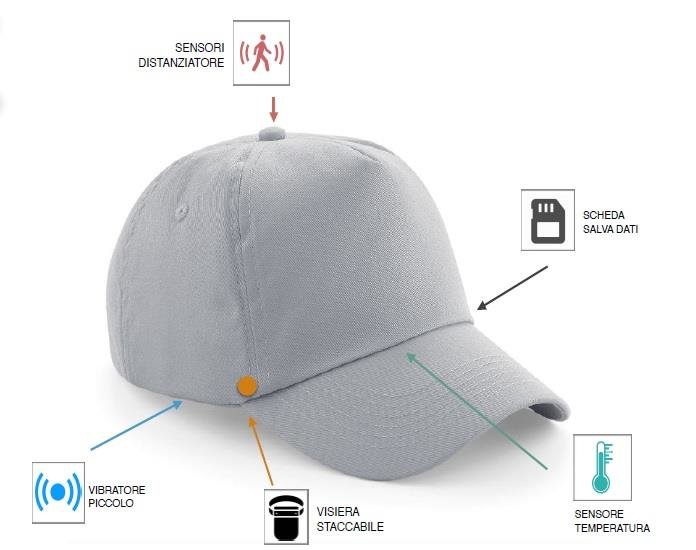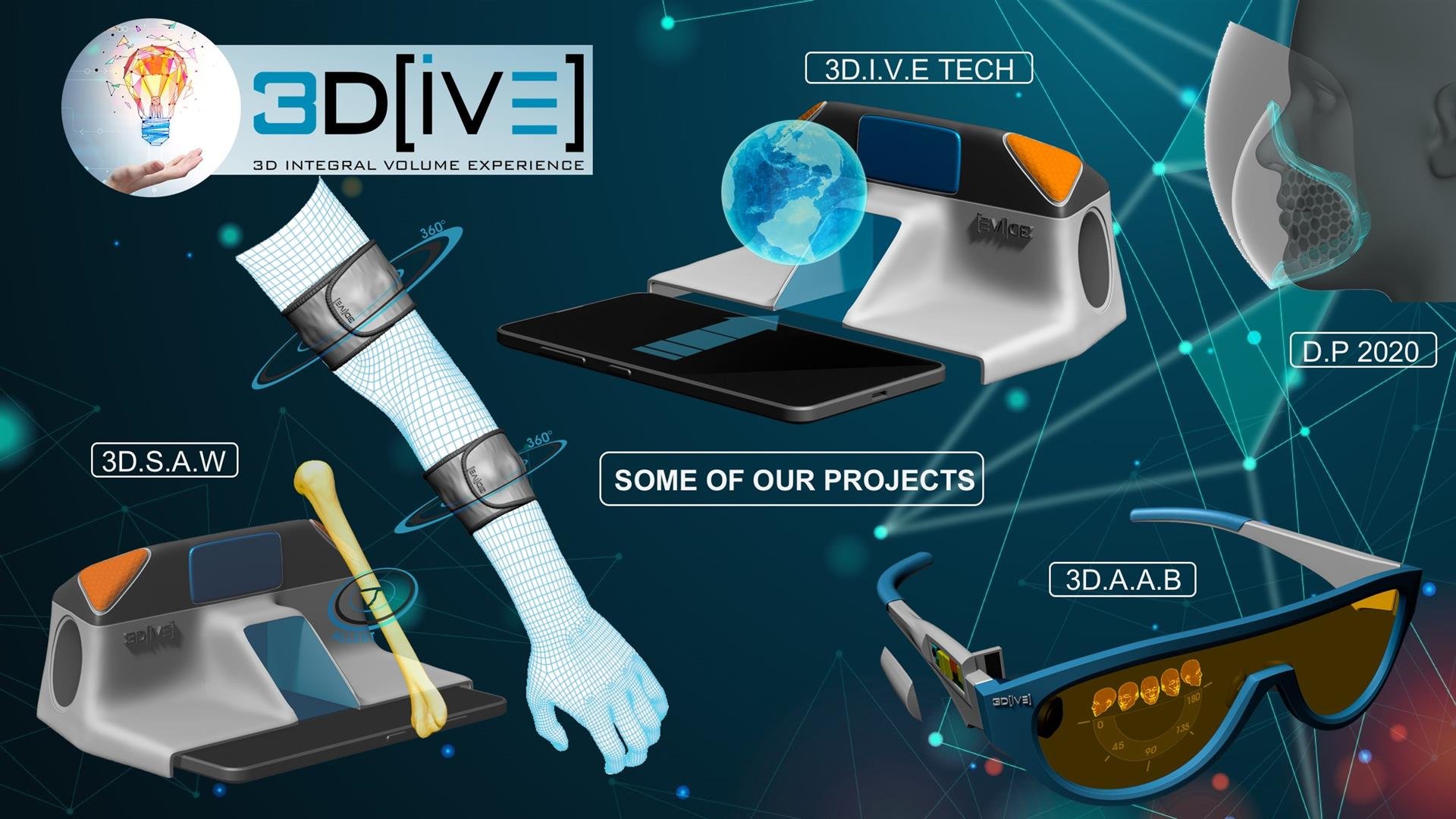
3D.I.V.E. is a startup, located in Storo, which has reached the pre-industrial stage for several products related to optical technologies and devices for the reconstruction of images and videos floating in air with three-dimensional components.
3D.I.V.E, stands for 3D Integral Volume Experience. During the first phase of the Covid-19 crisis directed its efforts towards the development of technologies suitable for the prevention of contagion, focusing above all on solutions allowing peace-of-mind during public events. In the forge of ideas and projects of 3D.I.V.E., which has the constant tenacity to explore new and often completely new fields of optical technologies, the latest addition is an anti-Covid cap, equipped with sensors that measure body temperature and signal non-compliance with social distancing.
3D.I.V.E. and the fight against Coronavirus: the hi-tech cap for Phase3
The company's project started from an idea of a "patch" equipped with sensors to then move towards the solution of the low cost and disposable visor-cap.
The "anti-covid hat" was designed to be light, cheap and pleasant to wear, with two distinct functions: in the part in contact with the forehead a group of sensors measure the body temperature and warn the user with a vibration in case of exceeding the critical temperature threshold other beepers warn if a safety distance is missing around the user. Also under consideration, as a possible future application, is the design of facial recognition infrared cameras that measure the temperature in the facial space between the eyebrows (the most reliable area) at entrance gates in public or potentially crowded places.
Cutting-edge research and development: the future of 3D.I.V.E. technologies
"The technology developed for the "3D-S.A.W." project could revolutionize the field of medical imaging by providing a safe and wearable device, which could be equipped for extreme sports enthusiasts, elderly caregivers and medical care centers in marginal areas of the third world or difficult to reach by medical personnel, such as ships or satellite stations".
Claire Lusardi, CEO, 3D.I.V.E.
In recent months, 3D.I.V.E.'s technologies have obtained the support of Citic Holding IF Group, an investment company in the USA, with a financial protocol worth 3.6 million euros; the first tranche of 600k euros will allow the prototyping and production of some technological products. A team of 15 specialists is working on research and development, pre-industrial phase, prototyping and production and there are already 6 patents filed, with another 2 on the way.
3D.I.V.E projects
During the prototyping phase, the startup has a measuring device that halfway between an instrument and an augmented reality goggle that, through the use of gyroscopes and accelerometers, detects any joint blockages of the head helping physiatrists, physiotherapists, osteopaths and dentists to obtain information about postural imbalances caused by misalignment in the occlusion between jaw and jaw responsible for back and rest of the body problems.
Among the most interesting pre-industrial prototypes is the "continuous light field" device in which you can insert your smartphone to reconstruct photos or videos with 3D components in the air. This technological solution, also applicable to the reconstruction of images projected from tablets, will make communications more immersive allowing, for example, to project in the air the face of a telephone interlocutor also going to offer new potential to the gaming industry. Other outlets will concern the field of diagnostic imaging and speech therapy, which today's social distancing complicates quite a bit.
A very promising technological solution in the medical field under development is the 3D-S.A.W. project (= Scanner based on Acoustic Waves): this project is aimed at the realization of a prototype device that will allow, by means of acoustic waves, to scan limbs or anatomical portions, for the detection of fractures and injuries, without the use of x-rays or intense magnetic fields, as happens in current radiographic, tomographic or nuclear magnetic resonance equipment.






